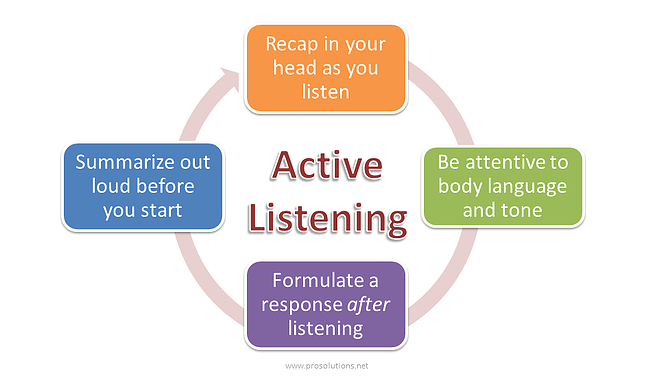 We may think we know what someone is trying to say, particularly if we make assumptions about them and their motives or agendas. But generally speaking, we are not learning when our mouths are moving. We are also not learning when we become too focused on what we want to say, the points we want to make, or when we spend time judging whether or not the person speaking is right or wrong. Pay attention to what is being said. When people in business fail to hear and understand each other, the results can be disastrous.
We may think we know what someone is trying to say, particularly if we make assumptions about them and their motives or agendas. But generally speaking, we are not learning when our mouths are moving. We are also not learning when we become too focused on what we want to say, the points we want to make, or when we spend time judging whether or not the person speaking is right or wrong. Pay attention to what is being said. When people in business fail to hear and understand each other, the results can be disastrous.
- Brown, Haygood, and McLean, The Little Black Book of Success
As the authors of The Little Black Book of Success highlight, a lot of things can get in the way of our ability to simply listen to what someone is saying. We take that ability for granted, and generally assume that what we hear is what was actually said (or what the person was trying to convey). But that's not always the case. If it was, there would be no misunderstandings. To become more cognizant of these issues and to practice listening openly, try this exercise:
- Find a time when you will be having a normal business discussion with an understanding colleague (a high-stakes client conversation is not the time to be doing an exercise for the first time), and explain that you are going to be doing a listening exercise, so there may be longer-than-usual pauses in the conversation.
- While you are listening, try very quickly recapping in your mind what the person is saying after each sentence or complete thought. Doing so forces you attend to more of what the person is actually saying and does not allow you the time to make assumptions too early or to get distracted by thinking about what you're going to say next.
- Once it is your turn to speak, take a second to formulate your opinion of what the other person was saying and determine your response. This will mean slightly longer pauses than usual, but you will find that they're not as awkward as you think, and the more you practice this technique, the shorter they will be until you eventually do not need any excess pause at all.
- As a bonus activity, if the person said something crucial or complex, begin by summarizing the key points of what the other person just said before you begin your response. This is a great way to cut down on the misunderstandings that can always arise no matter how hard we try to speak and listen as clearly as possible.

Want to learn more about active listening and other business and customer service tips? Subscribe to our blog to receive tips delivered directly to your inbox.


